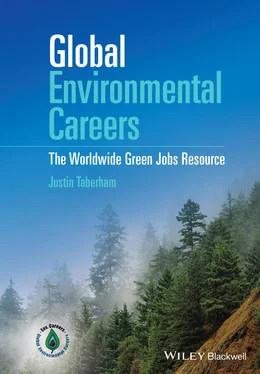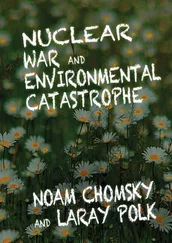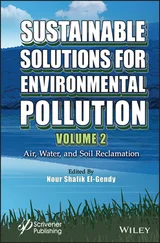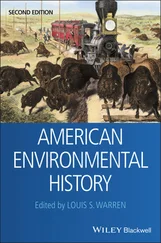Justin Taberham - Global Environmental Careers
Здесь есть возможность читать онлайн «Justin Taberham - Global Environmental Careers» — ознакомительный отрывок электронной книги совершенно бесплатно, а после прочтения отрывка купить полную версию. В некоторых случаях можно слушать аудио, скачать через торрент в формате fb2 и присутствует краткое содержание. Жанр: unrecognised, на английском языке. Описание произведения, (предисловие) а так же отзывы посетителей доступны на портале библиотеки ЛибКат.
- Название:Global Environmental Careers
- Автор:
- Жанр:
- Год:неизвестен
- ISBN:нет данных
- Рейтинг книги:3 / 5. Голосов: 1
-
Избранное:Добавить в избранное
- Отзывы:
-
Ваша оценка:
- 60
- 1
- 2
- 3
- 4
- 5
Global Environmental Careers: краткое содержание, описание и аннотация
Предлагаем к чтению аннотацию, описание, краткое содержание или предисловие (зависит от того, что написал сам автор книги «Global Environmental Careers»). Если вы не нашли необходимую информацию о книге — напишите в комментариях, мы постараемся отыскать её.
Global Environmental Careers – The Worldwide Green Jobs Resource
Kevin Doyle,
Lisa Yee-Litzenberg,
Laura Thorne,
Sharmila Singh,
Carol L. McClelland, PhD, Green Careers for Dummies
Global Environmental Careers — читать онлайн ознакомительный отрывок
Ниже представлен текст книги, разбитый по страницам. Система сохранения места последней прочитанной страницы, позволяет с удобством читать онлайн бесплатно книгу «Global Environmental Careers», без необходимости каждый раз заново искать на чём Вы остановились. Поставьте закладку, и сможете в любой момент перейти на страницу, на которой закончили чтение.
Интервал:
Закладка:
In terms of government reporting, it is helpful to know which industry sectors are growing and where the key opportunities are. Often, government funding for green jobs is diverted into industries where the shade of green is questionable. However, Governments often struggle to decide what green jobs are and what should or should not be included.
Scholars at the Heritage Foundation took issue with the notion that government subsidies and spending are helping to create large numbers of new green jobs, according to a report by David Kreutzer (2012). He explained:
The largest green jobs providers in manufacturing are steel mills (43,658 jobs) …Over 50 percent of all steel mill jobs are green. This high fraction of greenness is driven by the industry’s reliance on scrap steel for the majority of its inputs, not by the greenness of the goods produced with the steel. The trend toward greater use of scrap steel is decades‐long and is not the result of any green jobs initiatives.
Kreutzer also questioned the extent of green jobs and Government green subsidies in renewable energy:
The electric power generation industry has 44,152 green jobs…This may seem like a lot, but only 4,700 are in renewable power generation, including 2,200 in wind, 1,100 in biomass, 600 in geothermal, and only 400 in solar. Though these totals do not include jobs in the manufacture or installation of these power sources, they pale to the equivalent green jobs count in nuclear (35,755), which accounts for over 80 percent of all green jobs in electric power generation.
The US Bureau of Labor Statistics’ numbers above were reasonably close to the findings of a similar US study, ‘Sizing the Clean Economy: A National and Regional Green Jobs Assessment’, by the Brookings Institution (2011). However, the report does state:
The clean economy remains an enigma: hard to assess. Not only do ‘green’ or ‘clean’ activities and jobs related to environmental aims pervade all sectors of the U.S. economy; they also remain tricky to define and isolate—and count.
The International Labour Organisation (2016), an agency of the United Nations, has published its own definition of green jobs in its article, ‘What is a green job?’ Their simple definition is
Green jobs are decent jobs that contribute to preserve or restore the environment, be they in traditional sectors such as manufacturing and construction, or in new, emerging green sectors such as renewable energy and energy efficiency.
Green jobs help:
Improve energy and raw materials efficiency
Limit greenhouse gas emissions
Minimise waste and pollution
Protect and restore ecosystems
Support adaptation to the effects of climate change
In its Green Jobs Programme outputs, Gloria Acuña Navarro, from the National Learning Institute of Costa Rica noted:
Green jobs can embrace environmental practices and decent work conditions to varying degrees. Enterprises can start with small/‘lighter’ green initiatives and with time move towards more comprehensive/’darker’ green initiatives. Improving the environmental and social qualities of jobs is a continuous process that seeks to achieve sustainable development at national level.
Joanne Martens has developed the ‘Green World of Work’ Principle:
The Green World of Work (Martens 2020)
Change has impacted every aspect of our lives. There are tremendous forces reshaping society and with it, the world of work. Organisations and individuals are being required to accept their social, economic and environmental responsibilities. Sustainability and Resilience enable us to survive and thrive.
Environmental Sustainability
We face a number of environmental sustainability challenges in our communities, country and planet. Challenges are areas of focus that must be addressed to be sure that we have a healthy planet and to ensure that current resources will be in good shape for future generations.
Which Environmental Challenge Do You Care Most About?
Clean Water – Manage, deliver and treat water needed for industrial, agricultural, personal use and more responsible global use.
Communities – Build sustainable communities – neighbourhoods and cities – geared to human needs, so people can live and work in healthier ways.
Energy Efficiency – Increase energy conservation by reducing energy waste in our homes, businesses, cars and communities.
Food – Produce local organic food to keep people and the planet ‘healthy’. Encourage safer agricultural growth and develop cleaner processes in food production.
Green Construction – Build homes and businesses that are energy efficient, are healthy to live in and minimise waste.
Green Transportation – Design, build and use alternative transportation systems that move people and goods in energy efficient ways. Expand virtual capacity to minimise travel.
Healthy Environment – Protect and rebuild our environmental resources – oceans, forests and water – and preserve the diversity of plants and animals.
Healthy People – Keep people healthy as environmental changes endanger human health worldwide.
Reducing Waste – Eliminate waste and decrease the use of landfills. Refuse one‐time use products. Reduce consumption. Reuse materials and increase creative strategies. Recycle materials saves money and energy.
Renewable Energy – Generate renewable energy by harnessing wind, solar, geothermal and water resources.
Career Self‐Reliance
Career Self‐Reliance is a lifelong commitment to actively manage your work life and learning in a rapidly changing environment. ‘Work is what you do to learn a living’ (Career Action Center 1997).
How Are You Developing the Characteristics of Career Self‐Reliance?
Self‐Aware – You know who you are, where and how you do your best work; you understand and can articulate the value you add.
Values‐Driven – You have determined the values that give direction and meaning to your work.
Dedicated to Continuous Learning – You regularly benchmark your current skills and create a development plan to keep your skills current.
Future‐Focused – You look ahead to assess customer needs and business trends; you consider the impact of those trends on your work and on your development plan.
Connected – You maintain a network of contacts for learning and sharing ideas; you work collaboratively with others towards mutual goals.
Flexible – You anticipate change and are ready to adapt quickly.
World of Work
The concept of work is employment.
The structure of work are companies, organisations, governments and communities.
The work that needs to be done is often defined by jobs, roles, occupations, etc.
The workforce is made up of people who possess the knowledge, skills and attitudes to perform the work.
The work environment is physical, virtual and cultural.
How Do You Fit into the New World of Work?
The New World of Work redefined the social contract of long‐term employment, a dependent relationship between employer and employee to a social agreement between organisations and workers, developing interdependent relationships and fostering a resilient workforce. Instead of one career for a lifetime, the norm is between three and five careers in a lifetime.
Changemakers
Changemakers of the green generation are playing important roles in all challenge areas to achieve environmental sustainability. Changemakers work in government, business and industry, non‐profit organisations and research and education institutions.
Читать дальшеИнтервал:
Закладка:
Похожие книги на «Global Environmental Careers»
Представляем Вашему вниманию похожие книги на «Global Environmental Careers» списком для выбора. Мы отобрали схожую по названию и смыслу литературу в надежде предоставить читателям больше вариантов отыскать новые, интересные, ещё непрочитанные произведения.
Обсуждение, отзывы о книге «Global Environmental Careers» и просто собственные мнения читателей. Оставьте ваши комментарии, напишите, что Вы думаете о произведении, его смысле или главных героях. Укажите что конкретно понравилось, а что нет, и почему Вы так считаете.












